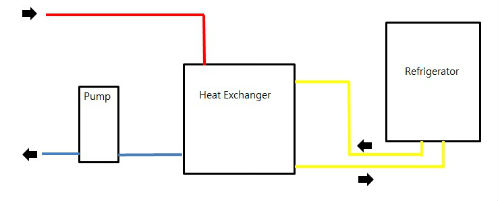Chilling Water Circulation Unit
Summary
A process of chiller removes heat from a heat source where temperature must be maintained within a narrow region, on a continuous basis. Fluid chillers remove heat based on the principle that heat will move from a hotter source to a colder source – from the process to a conditioned fluid. They comprise two main parts called circuits – a refrigeration and a fluid circuit. The two circuits work in concert to transfer heat away from the process and maintain a reasonably constant process temperature.
A water-cooled condenser expels heat by circulating cool water through lines in the condenser. The water moves the heat to an external cooling source such as a central chiller, domestic water supply, or cooling tower. The main components of the refrigeration system include the compressor, condenser (air or water cooled), evaporator, and the expansion valve.
The main components of the fluid circuit include the process pump, fluid reservoir, controller, and the evaporator where the heat exchange occurs. Additional items shown above include the optional return process filter to protect the pump, and bypass valve-installed to provide a process fluid path for the pump in the event that fluid cannot flow to the load.
These chillers can implement a variety of refrigerants. Most often, water is chilled (fluid chillers), but this water may also contain a percentage of glycol/water, propylene/water, and/or corrosion inhibitors, other fluids such as thin oils can be chilled as well.
Sub-Items
▪ Refrigerator
▪ Circulation Pump
▪ Evaporator & Tank
Flow Diagram

